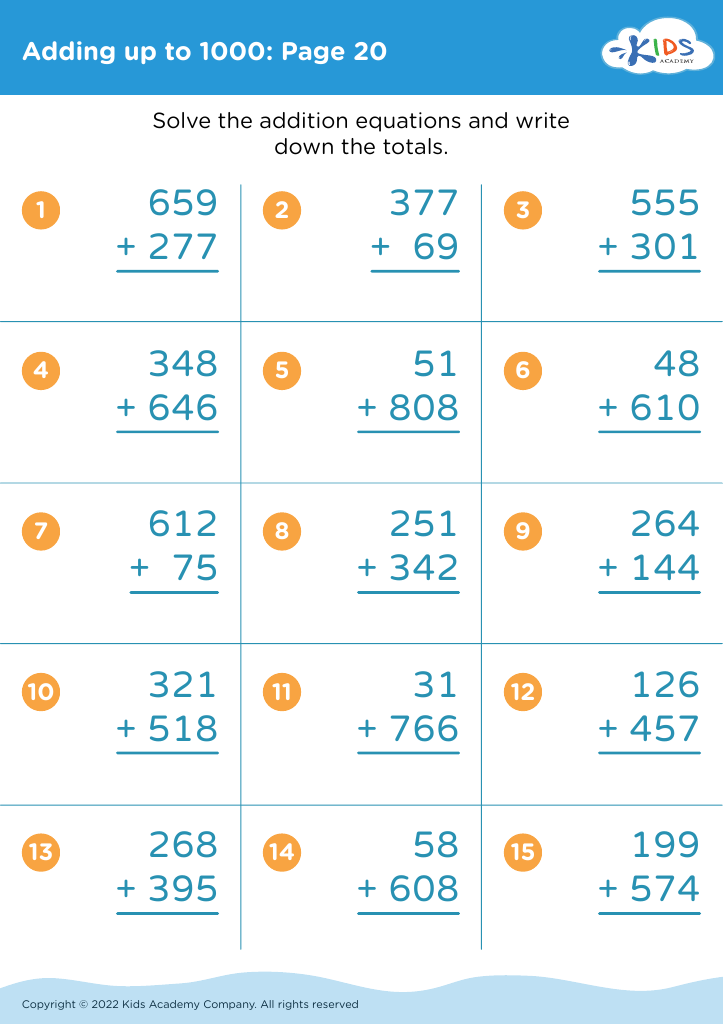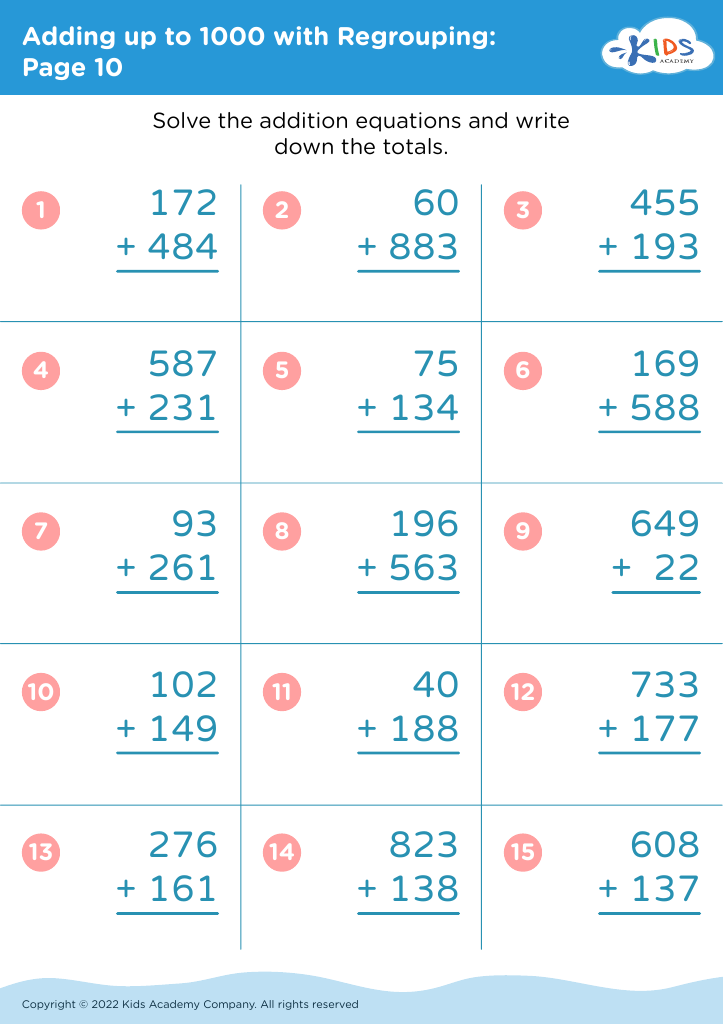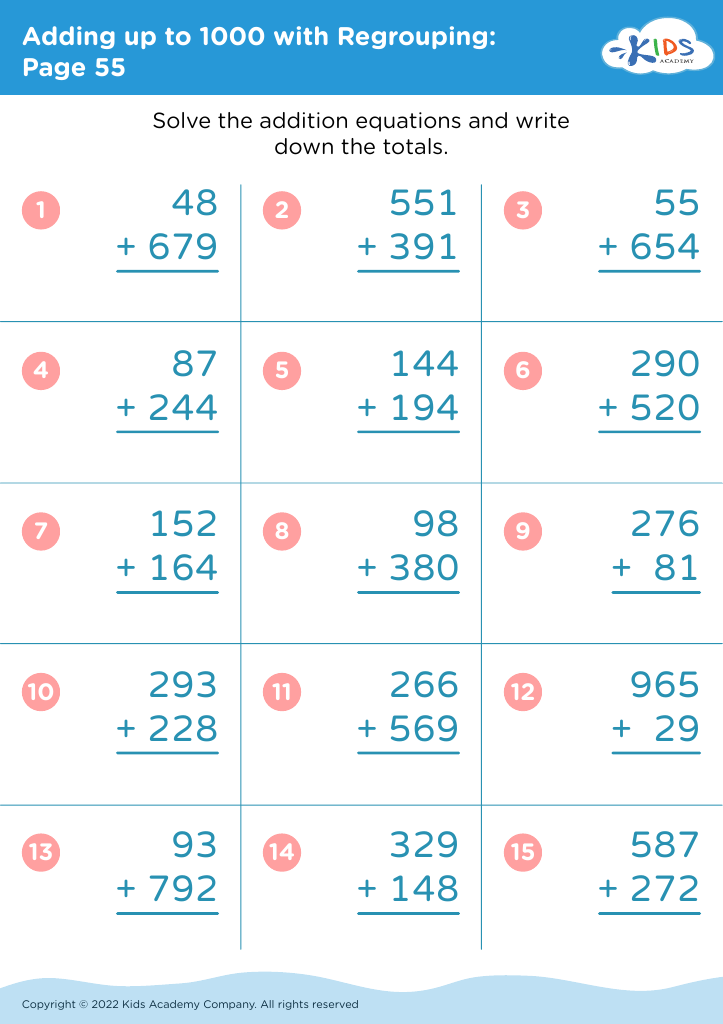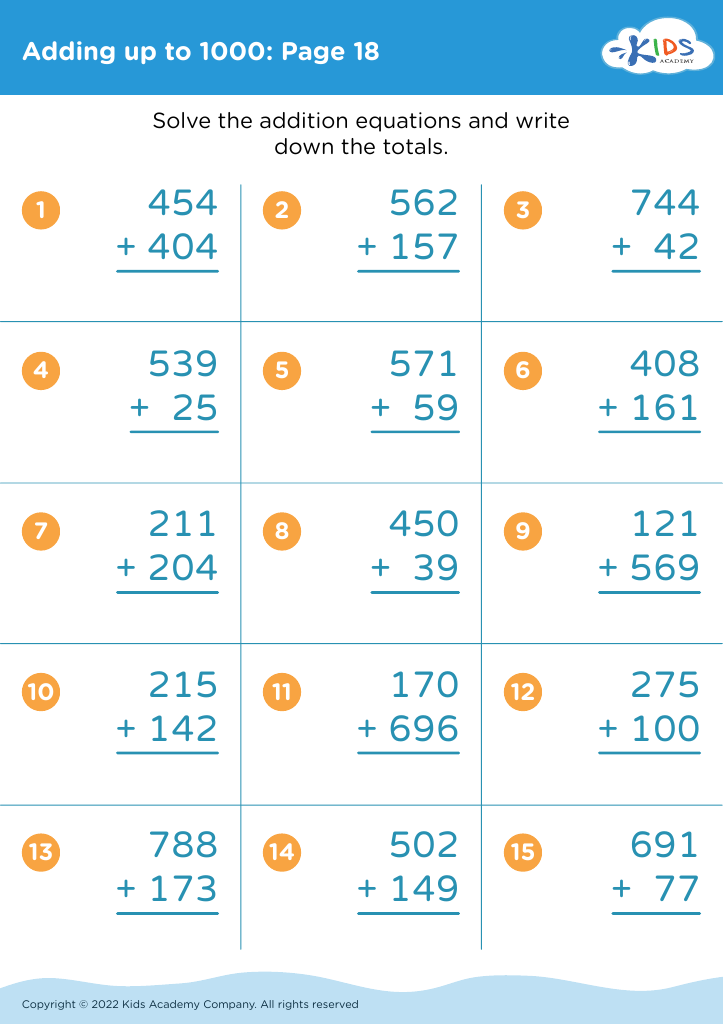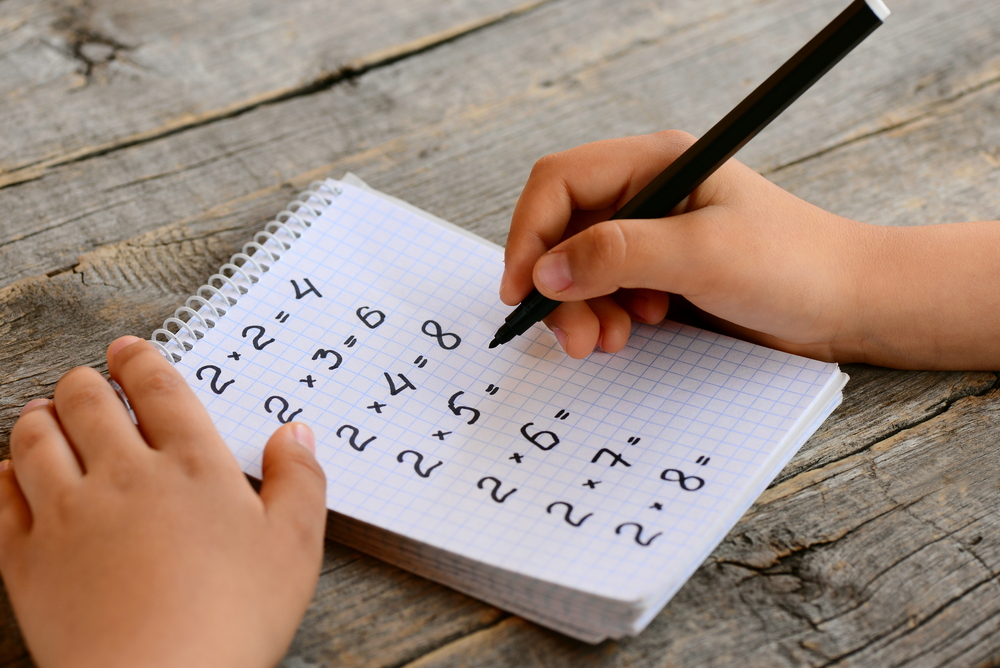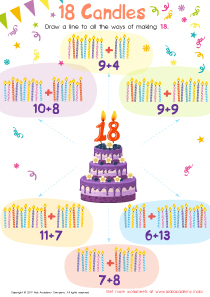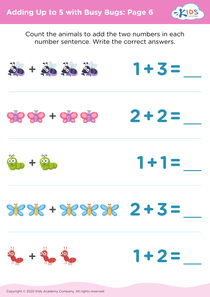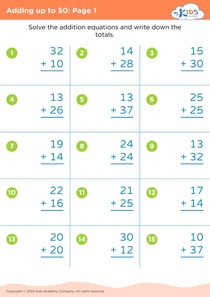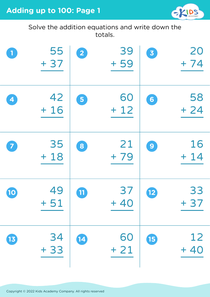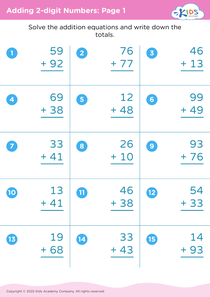Understanding symmetry Adding up to 1000 Worksheets for Ages 8-9
4 filtered results
-
From - To
Explore our engaging "Understanding Symmetry Adding Up to 1000 Worksheets" designed for children aged 8-9. These interactive resources help young learners grasp the concept of symmetry while enhancing their addition skills up to 1000. Fillable and printable, our worksheets offer a fun way to blend math with visual artistry, allowing kids to discover symmetrical patterns and shapes. They encourage creative exploration and critical thinking through hands-on activities and real-world examples. Perfect for classroom or home use, these worksheets foster a solid understanding of symmetry, turning math lessons into exciting adventures! Unleash your child's potential with our comprehensive learning tools today!
Understanding symmetry and the concept of adding up to 1000 are essential skills for children aged 8-9, and it's crucial for parents and teachers to emphasize these concepts in their education. Learning about symmetry helps children develop spatial awareness and visual perception, which are foundational for higher-level mathematics, geometry, and art. Recognizing patterns and reflective properties fosters critical thinking skills, enabling students to see relationships within math and the world around them.
Adding up to 1000, on the other hand, reinforces fundamental arithmetic skills. Mastery of this concept builds a solid number sense, enhances mental math capabilities, and supports more advanced calculations like addition and subtraction, leading to greater confidence in problem-solving. An understanding of larger numbers prepares students for concepts like place value and rounding, which become especially important in later grades.
The integration of these practices into meaningful, real-life contexts can engage children and foster a sense of curiosity about mathematics. By nurturing these skills early, parents and teachers can lay a strong groundwork for children's future academic success, encouraging them to approach math with enthusiasm and a positive mindset. Ultimately, supporting children in these areas can cultivate a lifelong love for learning.
